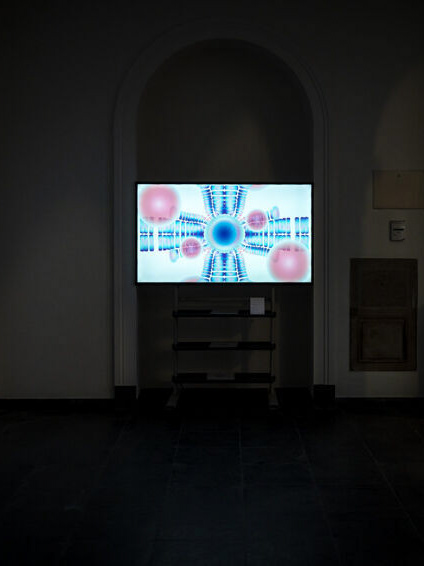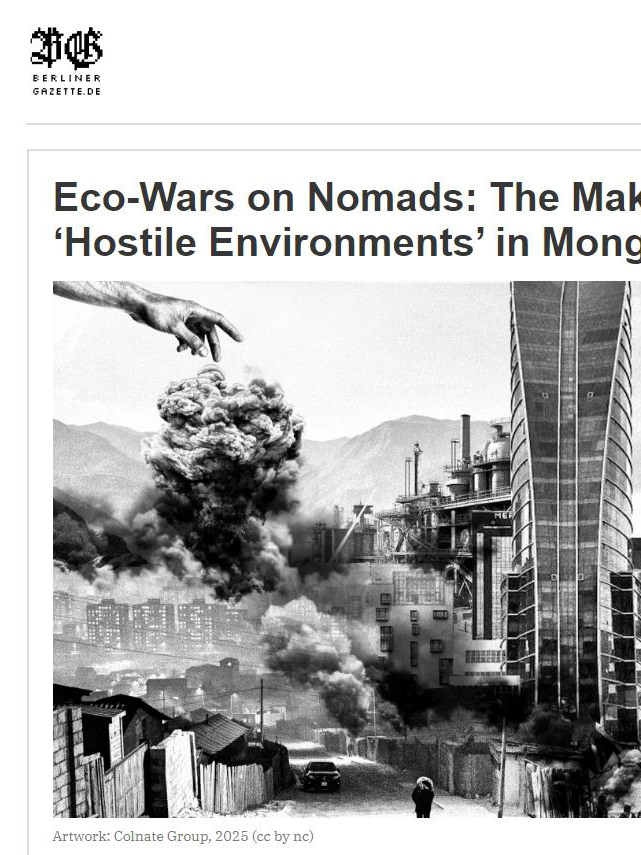"FIVE NOMADIC ANIMAL STORIES"
2022
Part 1: Lonely lbex
In 2019 Mongolia registered circa 70 million head livestock, most of which are cashmere goats. After the collapse of the Soviet Union, nomads entered so-called capitalist nomadism. Due to such a large number of goat herds, now Mongolian grazing land is turning into a desert. Such impact is disrupting the natural seasonal cycle and harsh weather is evident in recent years. More and more nomadic household is losing their livestock in extreme weather condition and nowhere to seek refuge except the capital city. This is the last nomadic migration and transition into sedentary/modern lifestyle.
In the Steppes of Mongolia, male lbex would grow old until they cannot support their own head, so they climb up the highest rock and wait for days until they slip and fall.
Part 2: Duel of Yaks
Yaks have come to Mongolia traveling all the way beside the Tibetan nomads. Since then, they are now perfectly adapted into Mongolian nomads who move around the mountains, tundra, taiga, and even steppe. This nomadic bovine can adapt to any kind of environment except a sedentary lifestyle. Just like that, nomadic people are even after they settled in the city still looked down on because modern life is so much different than what they used to for generations. Often from financial struggles, lack of housing, or academic titles, modern nomads are forced to take jobs that generate housing, education, and steady income, such as in copper, coal mine, or near a gas line.
Two brother yaks are facing head-to-head. As the brother yaks become bulls, the mountain that they grow up in becomes too small for both.
Part 3: Camel Family
Bactrian camels live in extremely harsh conditions. They do not just survive without food or water, they can also endure long periods of cold, hot, humid, or dusty weather. In recent years more and more extreme dust storms are happening in the Gobi Desert, and it is harming the industrial economy near Inner Mongolia and China. For long periods of time people spent fortunes trying to plant plenty of trees and turn the desert into a lush green forest. However, since the plants come from warm country, it could not adapt to the harsh Martian landscape. So, they began to build techno caves to protect everything man-made from sand and dust.
This techno cave is a summer shelter for a mother camel with her twin calves. The desert nomads of Mongolia say that the twin camel calves bring good luck.
Part 4: Four Horses
Except for cashmere export, Mongolia is slowly growing to be the biggest copper ore exporter in the world. Copper mine called "Oyu Tolgoi" is a relatively new mine but as the other copper mines around the world dry empty due to high demand for energy-efficient products, one day this too will be left behind.
Four horses snoozing on a frozen lake. These horses were here during the last ice age when humans were merely surviving day by day. Ever since the first horse was domesticated, human history is the history of horsepower. Now there are no men to tame or force them to work, wild horses are peacefully enjoying the frozen end of days.
Part 5: Robots and Techno - Totem
Humans need more technology. To supply the demand, you need technology that builds itself. So, humans made Al factories around the world, to build robots. Technology needs copper, lithium, and iron, and those become more important than gold or diamond. To find a newer, better, and richer planet humans take everyth i ng that they can manage to get from the earth, and they leave. As extreme weather conditions kill the last mammals that left, Al machines create more robots to ease themselves from loneliness. Since they were born to build, they recycle what is left and create a so-called robotic biosphere. This planet seems dead for humans or mammals, but robotic animals able to thrive and evolve. When they achieve intelligent techno form, they start to worship the ancient animals that roamed the world before them and even sing the forgotten melodies that nomads left behind.
My great grandmother once told my mother:
"Humans get more intelligent, and their brains won't stop growing. As the brain starts to grow body will shrink until they look like a sheep"
“Five nomadic animal stories” is a mixed media installation about a hypothetical future world that seems no humans occupy. Rather all man-made structures are adapted into a new techno-landscape that is used by the nomadic animals that left behind. With the help of sound keys each animal character tries to express the freedom of non-human world and the melancholy of being forgotten.
Due to the limited resources of the environment, animals and humans undergo nomadism in some parts of the world even today. However, the modern or civilized human being is only viewed as part of a sedentary society. Through the five nomadic animals, we explore the forced urbanism of today’s nomadic and ethnic minority people of Mongolia, and their livestock in which they live under symbiosis. The goal of the work is to invite the audience to experience a nomadic take on a sedentary issue such as lack of housing, war on resources, and over-cultivation of vegetables and meat.









